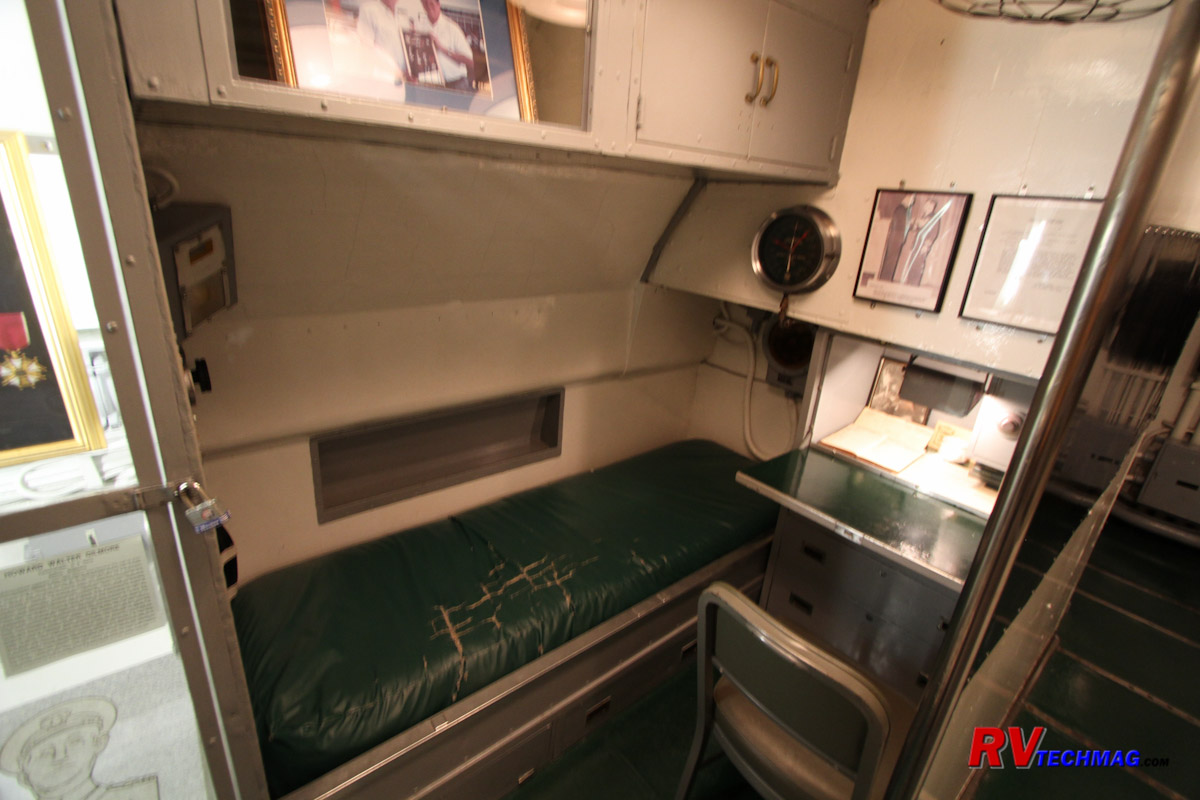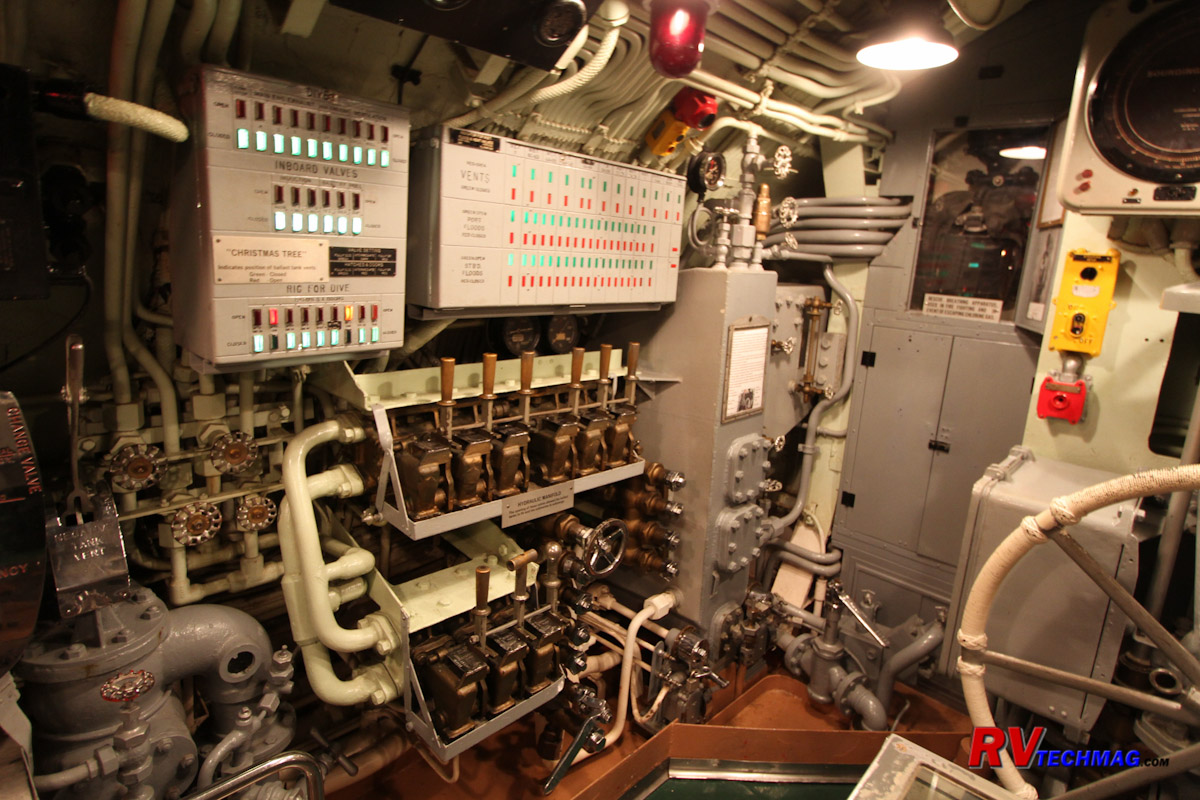USS Alabama
Exploring Mobile's Battleship Park
Article Date: April, 2016
Article and Photography by Mark Quasius
USS Drum

The USS Drum is a Gato class submarine from World War II. Launched May 12, 1941 by the Portsmouth Navy Yard it
is the oldest remaining American submarine in the world. The USS Drum was donated to the USS Alabama Commission on April 14, 1969 and
was opened to the public on July 4, 1969.
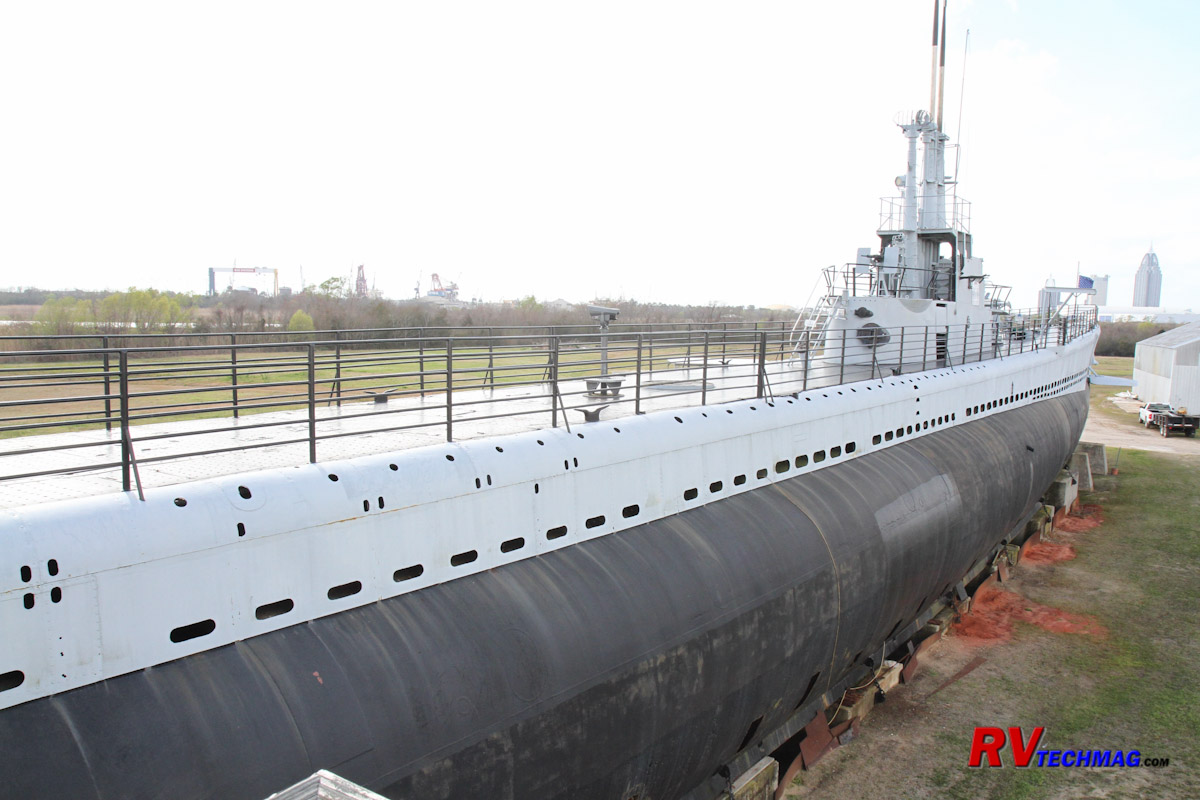
The USS Drum is situated on dry ground on one side of the parking lot. It was moved there in 2001 from its sea berth after it suffered
damage during the storm surge of hurricane Georges. The project of moving the Drum garnered several engineering awards. On going
restoration efforts continue to repair damage to the hull and remove the lead ballast.
|
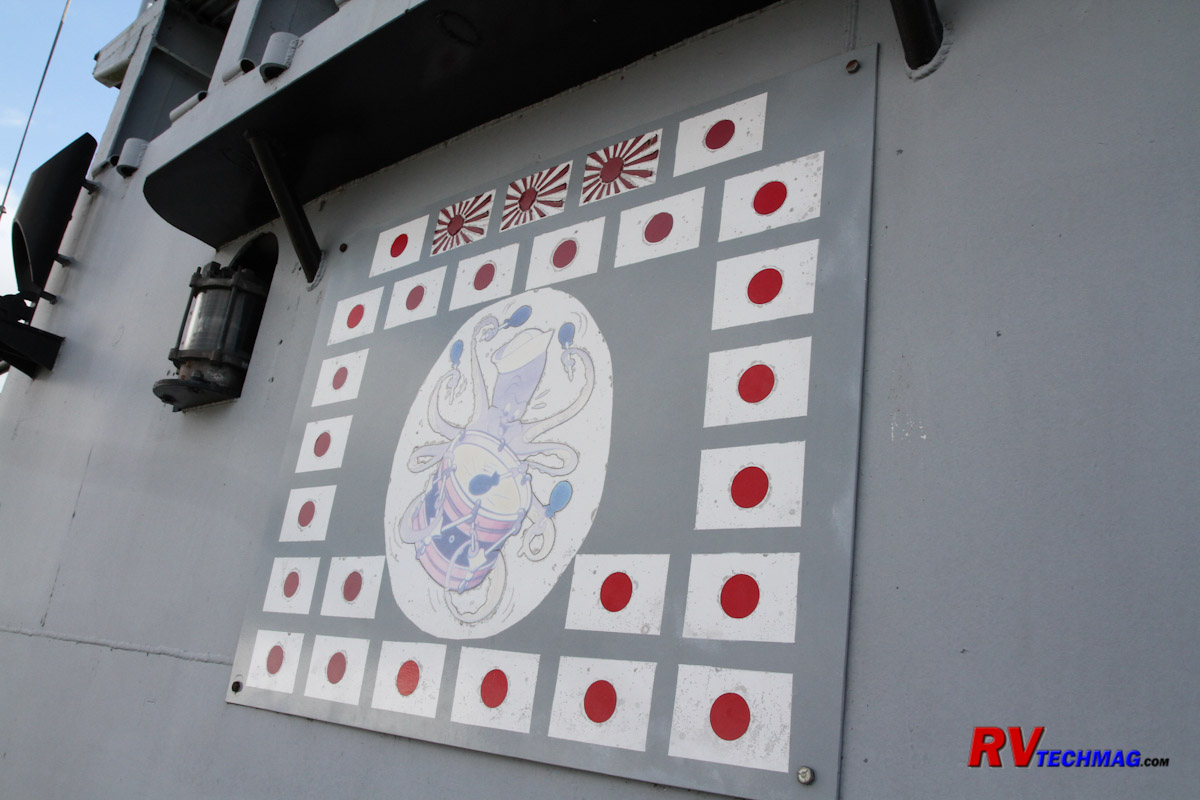
The Drum was one of the most successful submarines in World War II. It received a total of 12 battle stars and was
credited with sinking 15 enemy ships at a total of 80,580 tons, making the Drum eighth highest of all U.S. submarines
in total Japanese tonnage sunk.
Visitors climb aboard the ship via walkway to the rear of the
ship. After walking the deck, the ship is entered near the bow.
The 3" deck gun was mounted on the forward deck and used for surface attacks. A Bofors 40mm gun was placed just behind and above the
deck gun on a raised platform and is primarily used for anti-aircraft defense.
|
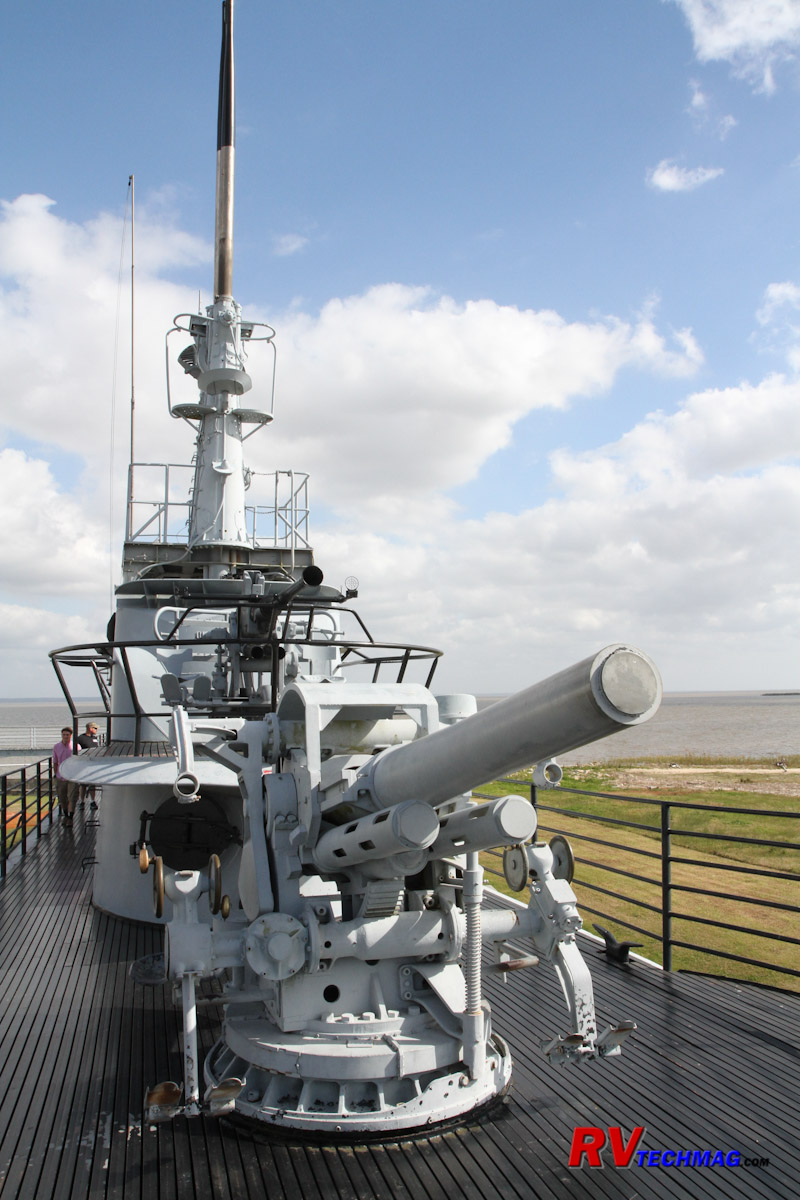
|
|
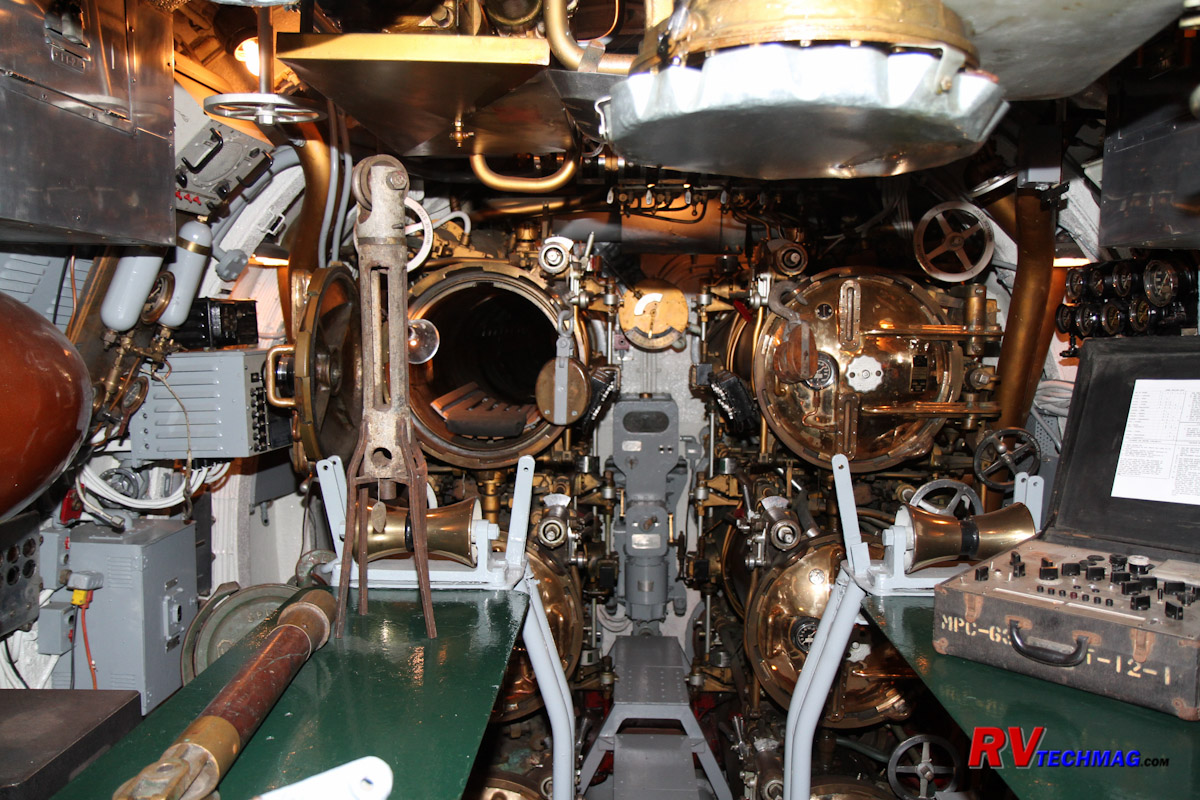
The forward torpedo room hold six torpedo tubes.
|
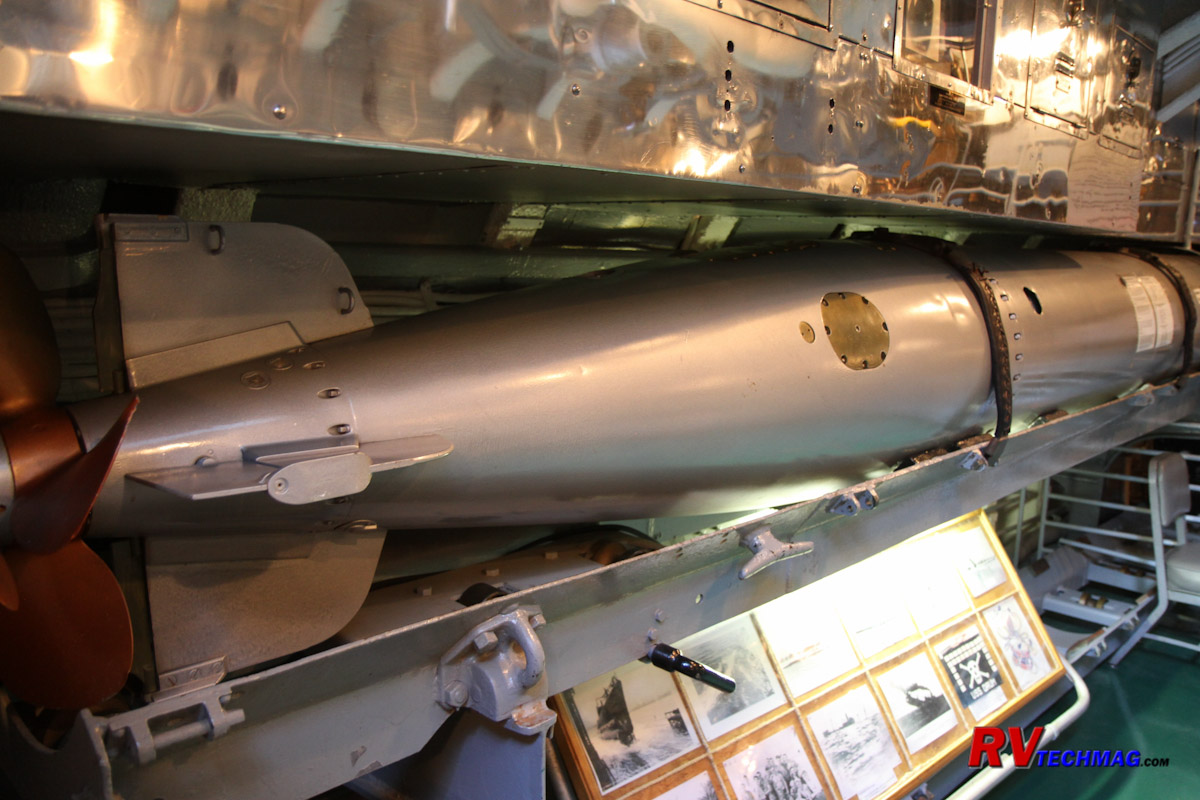
Torpedoes are stored in racks, ready to be loaded into a tube when ready.
|
The forward torpedo room is the real business end of the submarine. 21" diameter
torpedoes can be fired from six
tubes in the nose of the ship. The Drum can carry a total of 24
torpedoes although some of these are held in the aft torpedo room for
firing from the stern tubes. Torpedoes are stored in racks in each room and loaded into the tubes with ropes and pulleys or push rods.
The outer doors are closed and the tubes pressurized with air. Once loaded the outer doors are open the
torpedoes are launched with
compressed air and the electric driven propellers power the
torpedoes to their target.
Space is limited aboard a submarine.
Submarines operated 24 hours a day and crew members are berthed in "hot racks",
which means that crew members share each bed between shifts. The cramped Captain's Cabin is one of the more spacious areas.
The control room is all business. The Christmas Tree
displays green and red lights indicating that everything is
safe to dive. The various valve handles control trim and ballast tanks. The large wheels on the right control the diving planes. Depth
meters diving angle meters are flanked by numerous valves and controls used to dive or surface the ship.
|
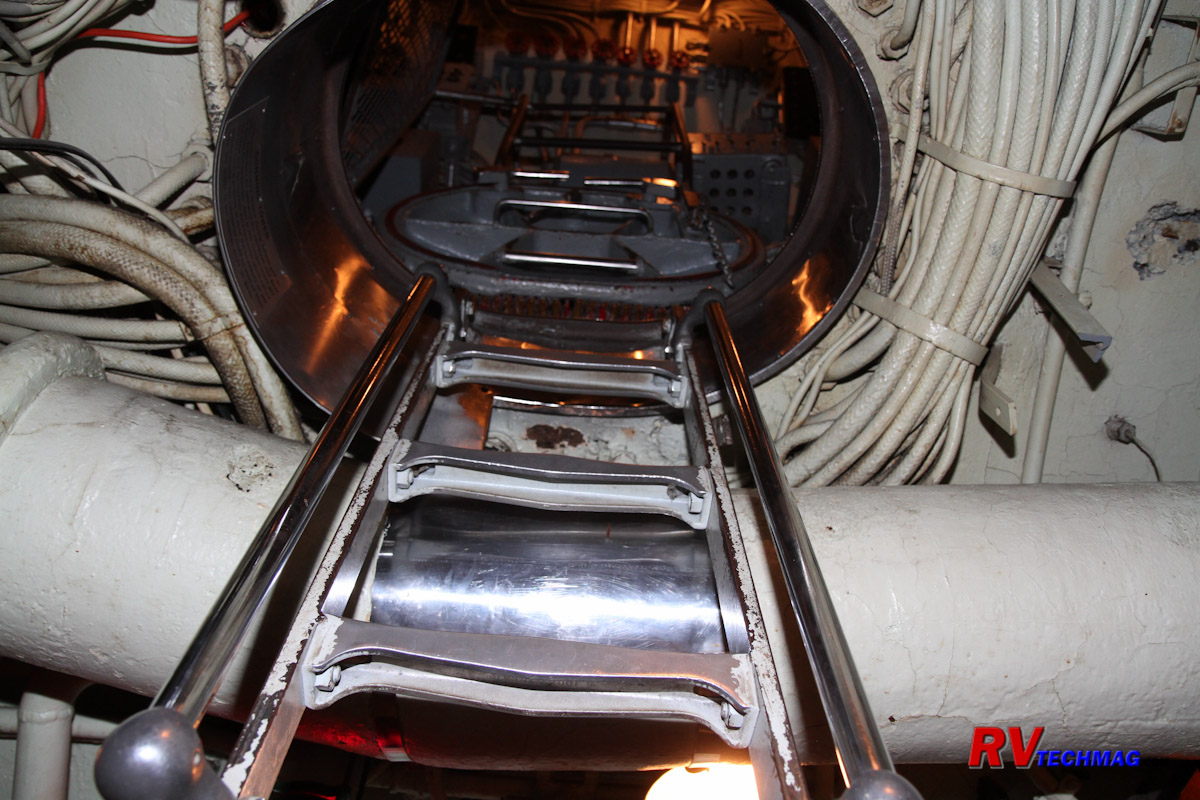
The conning tower is accessed by climbing a ladder up through a narrow passageway.
|
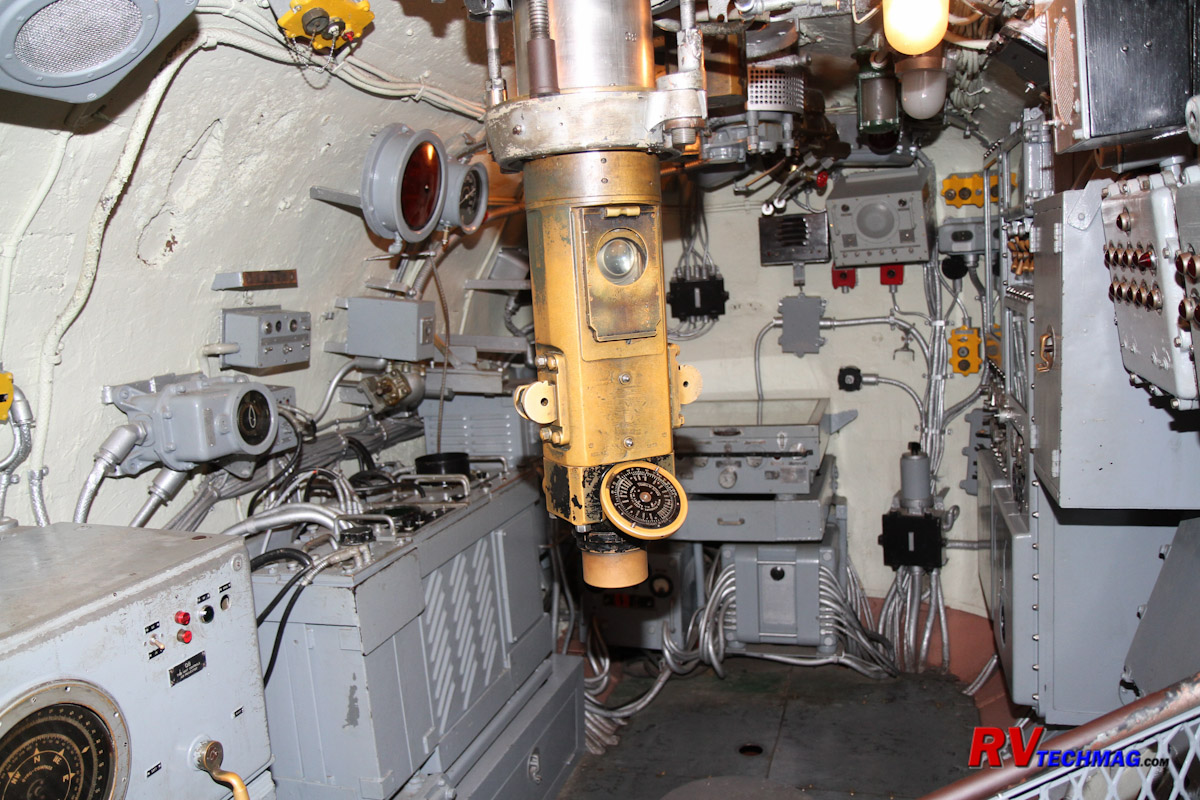
The conning tower is where the periscope is located. All of the controls for firing the
torpedoes is found here.
|
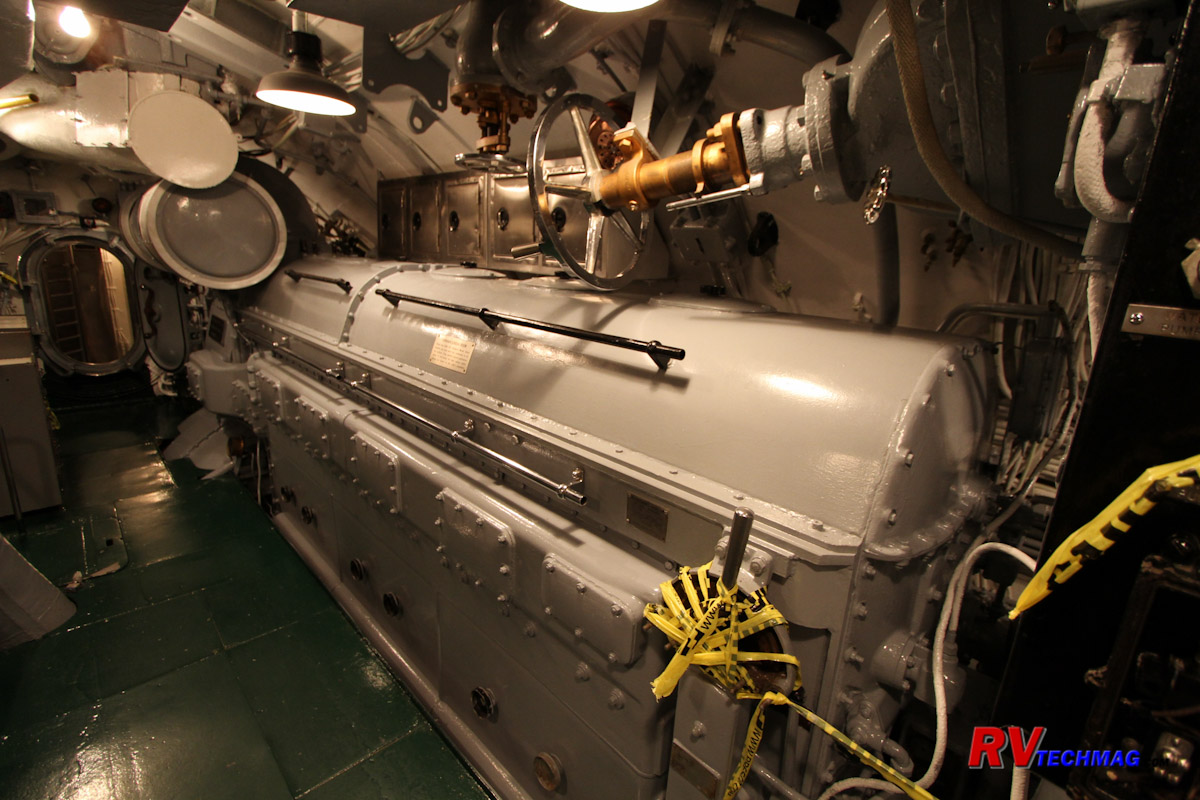
The forward engine room contains two 1600 HP Fairbanks-Morse diesel engines which operate generators to power the electric
motors that drive the propellers while on the surface.
|
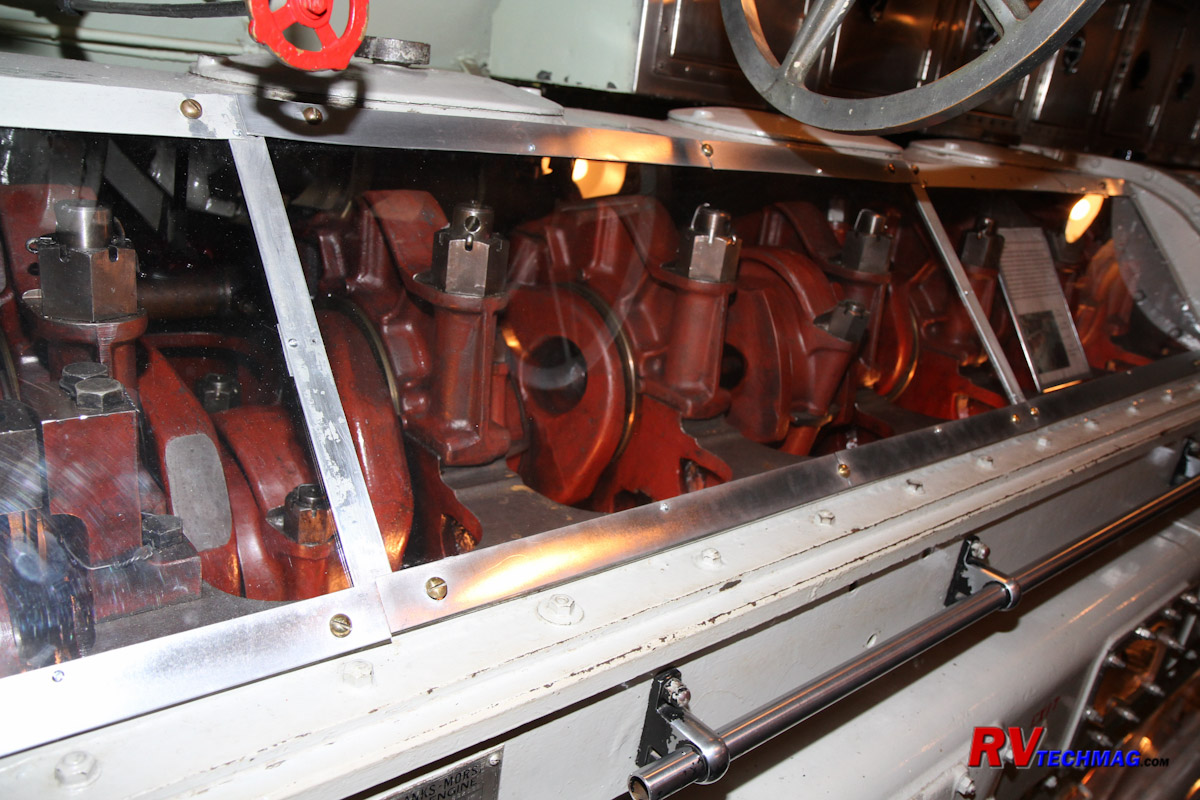
There is a pair of engines in the aft engine room as well. One of these engines has been cut open to display its
crankshaft. The engine is not upside down but has two pistons in each cylinder with one crankshaft at top and another
at the bottom. It uses ports instead of valves and is a very simple and reliable engine. Parts are still available today.
|
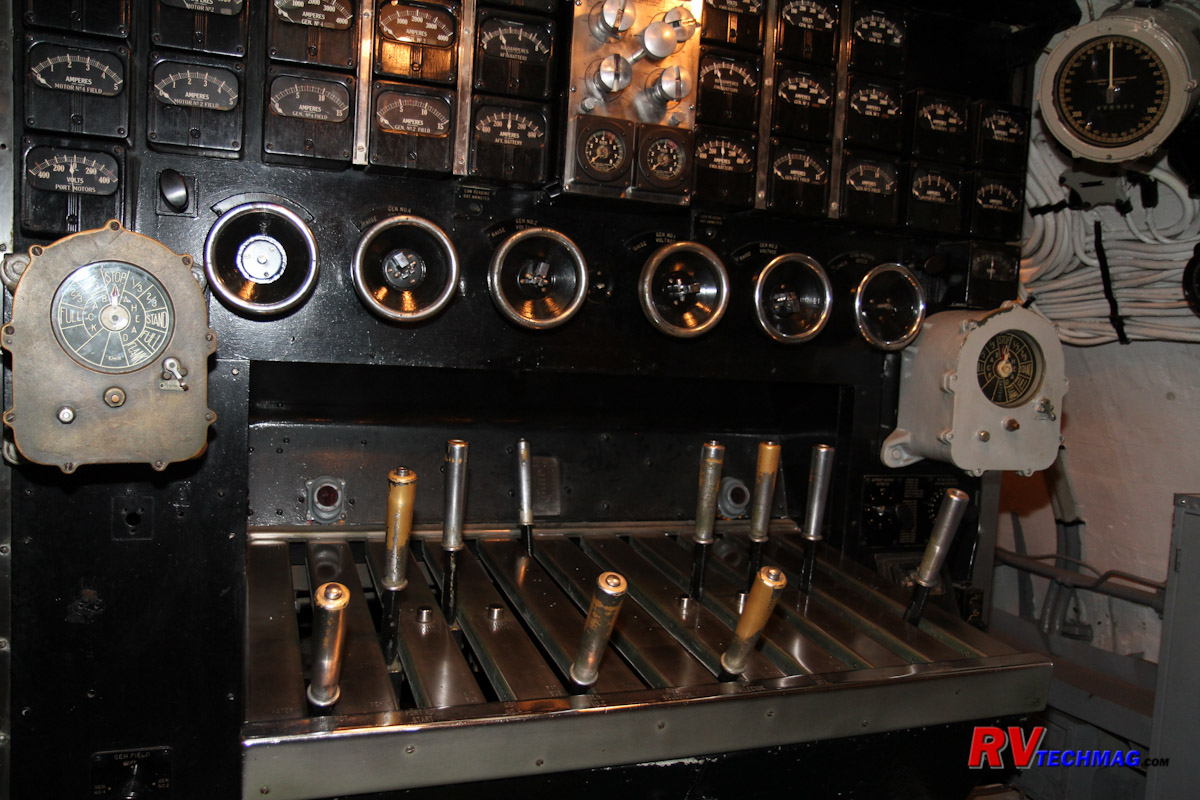
The various transmission and throttle controls in the aft engine room control the
speed and direction of the propellers. The
electric motors can run off of battery power when submerged and in silent mode.
|
|
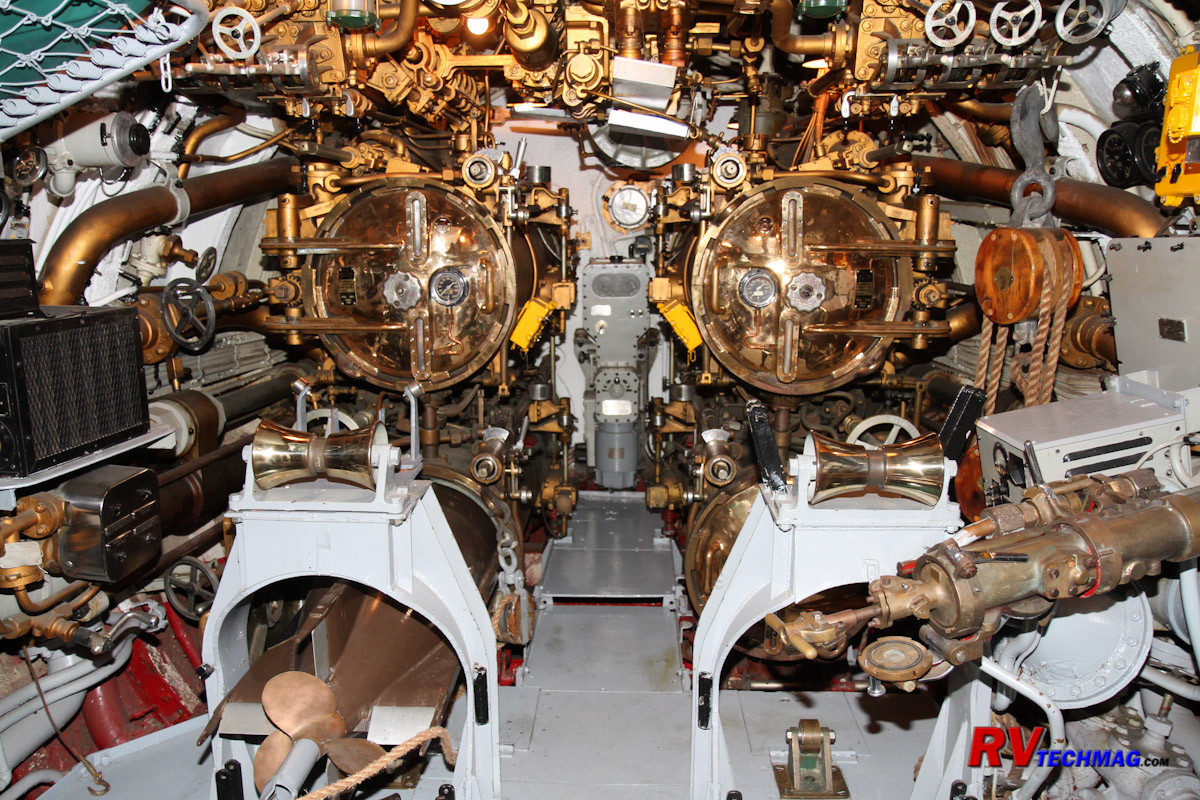
The aft torpedo room holds four tubes. Torpedoes are moved from
their racks to the tubes via block and tackle.
|
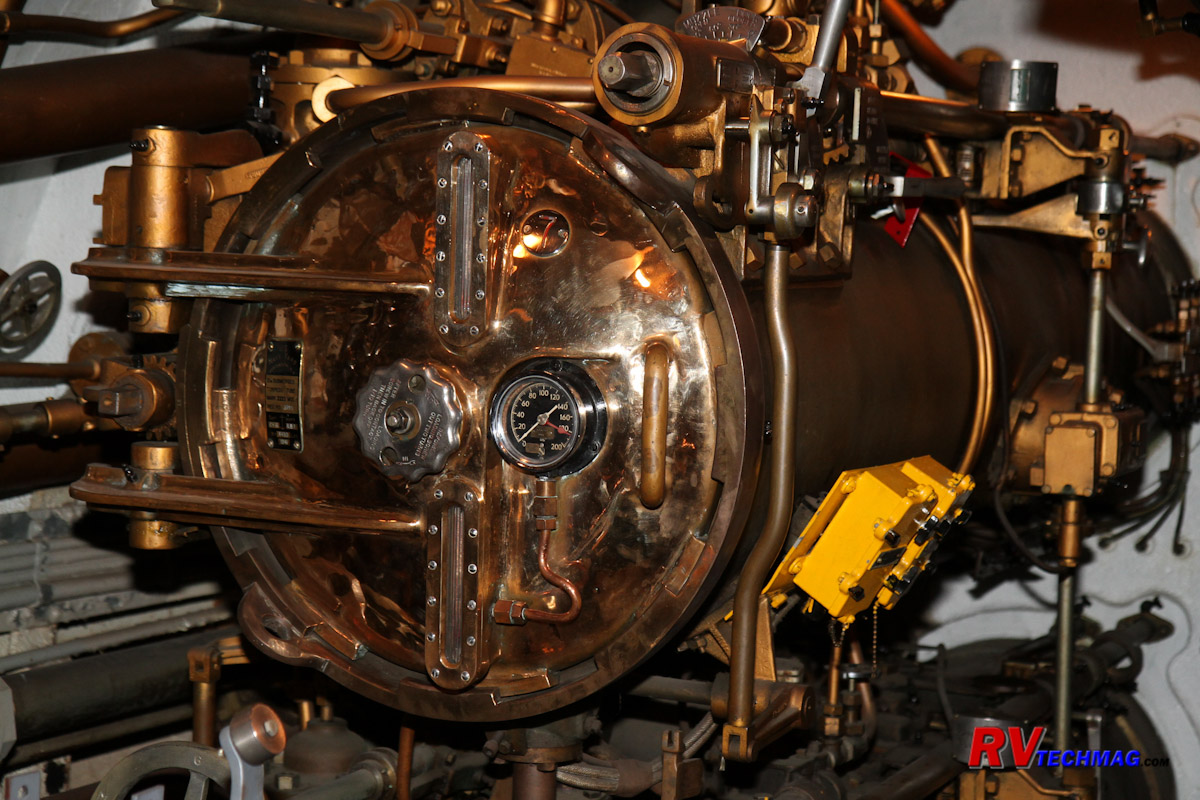
Torpedo tubes use air pressure to launch the torpedoes so that they can begin their run to the target.
|
The USS Drum is an excellent example of the type of submarine that the U.S. used during World War II. The
diesel-electric subs of the Gato class made up the backbone of the Navy's Silent Service. Many were lost during the war and surviving
boats were scrapped. The USS Drum is now the oldest remaining submarine in the world and it's continuing restoration efforts, supported
by a group of former submarine vets, offer a glimpse into what life under the seas was like at that time.
Source
USS Alabama
(251) 433-2703
www.ussalabama.com
Return to Home Page
If you enjoyed this article be sure to recommend RVtechMag.com to your friends, like us on Facebook or Twitter
or subscribe to our RSS feed.



|









